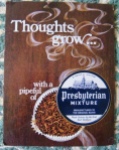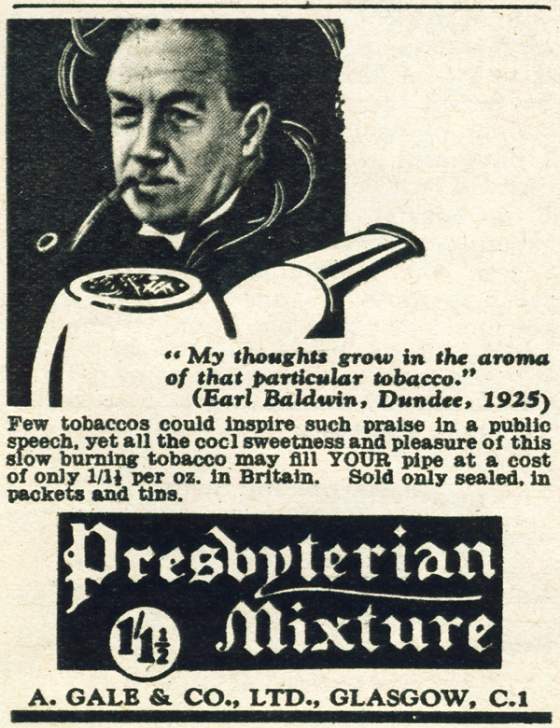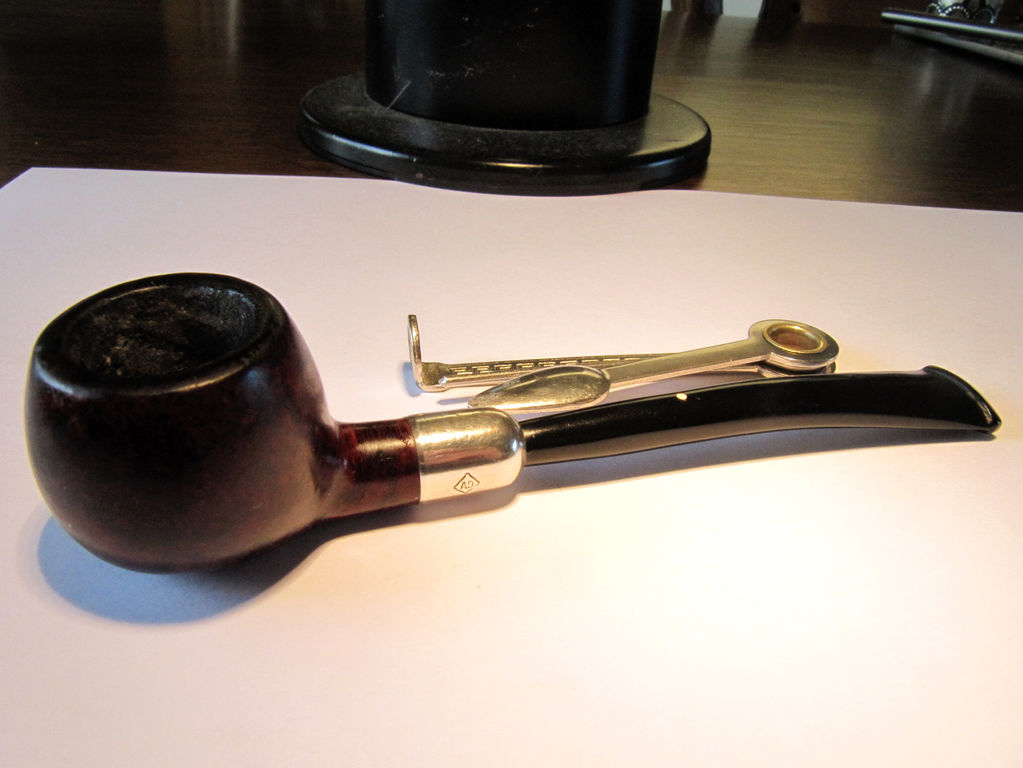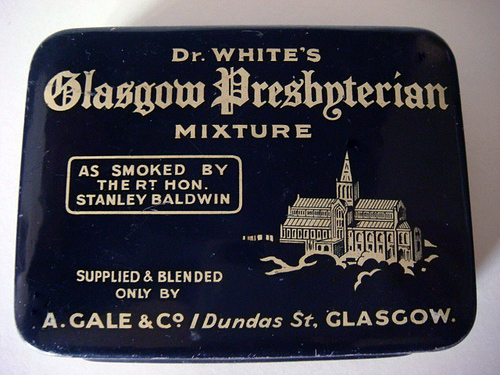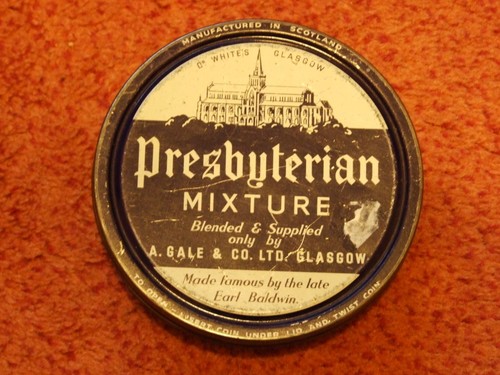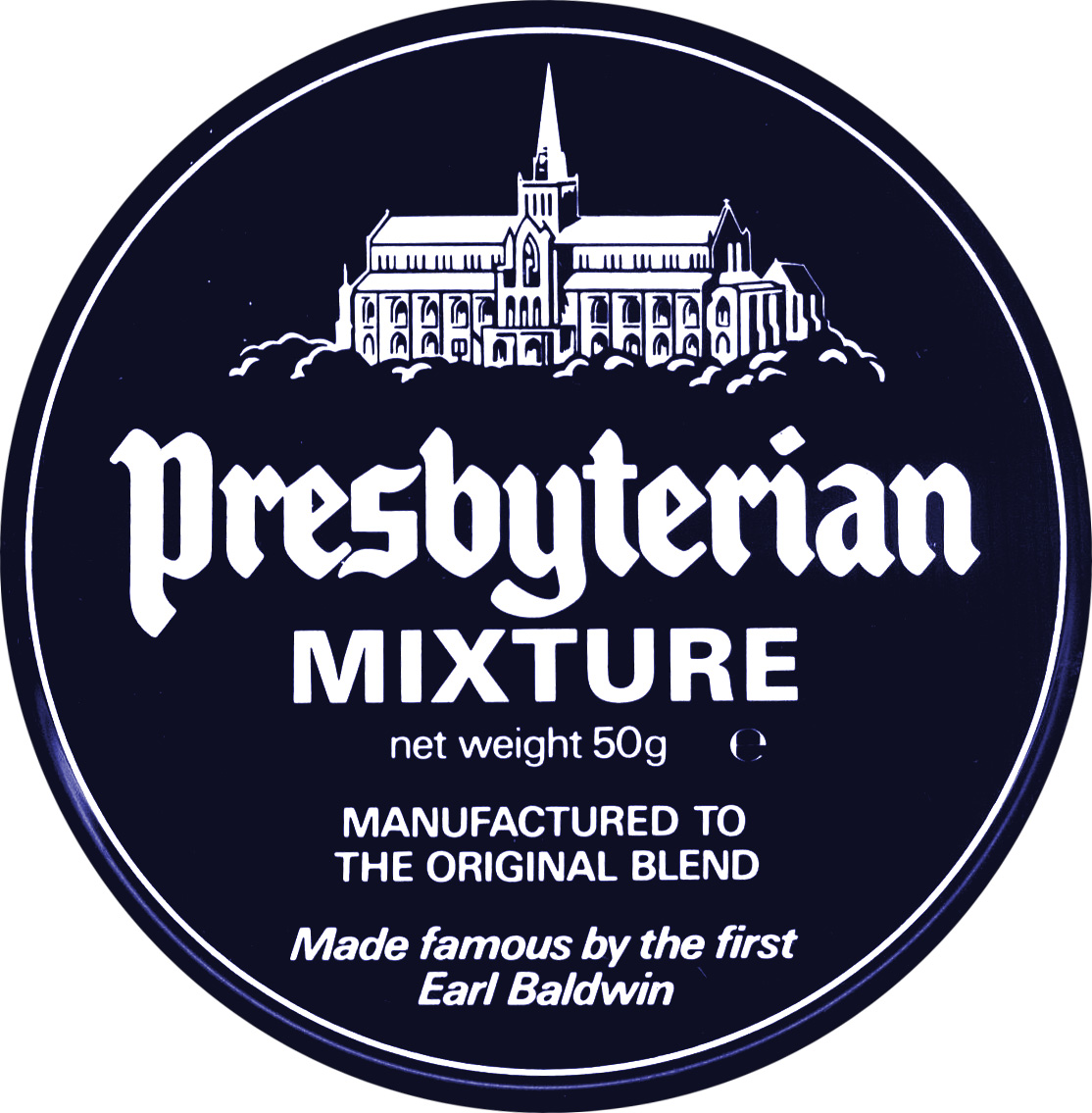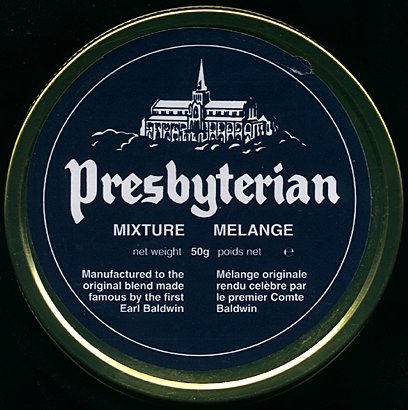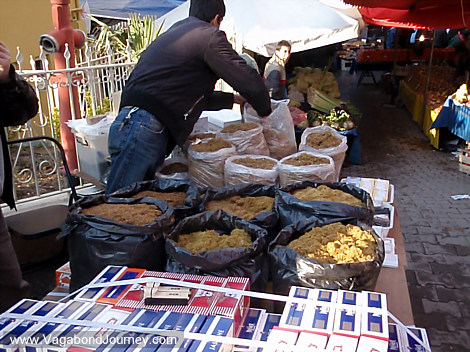In my early pipe-smoking days, being a lover of heavy metal/hard rock music, I was quick to notice the great artwork of the Presbyterian Mixture tin. It’s Gothic church and font type immediately appealed to me. I mean, look at the cover of one of my favourite records, Opus Eponymous by the band Ghost. But for some reason I never tried the blend..
Presbyterian Mixture has been amongst us for a pretty long time. This fine tobacco originally had no name. It was blended before the first World War especially for the Very Rev. Dr. John White, sometime minister of the Barony Kirk in Glasgow and Moderator of the General Assembly in Scotland in 1929. He introduced it to Stanley Baldwin, later Earl Baldwin, Prime Minister in 1923, 1924 and 1935. He liked it so much that regular supplies were sent down to him and it was he who suggested that it be called “Presbyterian Mixture”. Hence the name. Earl Baldwin even said “My thoughts grow in the aroma of that particular tobacco.” My girlfriend would say “My nose suffers in the aroma of that particular tobacco.”..
In the early days the mixture was made by A. Gale & Co Ltd. from Glasgow. The blender was William P. Solomon. Now it is made for years by Planta from Berlin.
For me Presbyterian is an oriental mixture. The tin of the international version (more about that later) says this: Mellow blend of US-Virginia tobaccos and high quality Macedonian grades – exclusive, aristocratic pipe mixture. The Planta catalogue also says that the blend contains a number of selected Latakia leaf tips. This has been a controversy for years but I really don’t know why.. When you smoke it you clearly can taste the dark leaf (an oriental in itself). There is not much of it in the mixture but it is clearly noticeable.
Yes, smoking the mixture.. I got my first tin of Presbyterian from fellow Dutch pipe-smoker forum member and dear friend Ed. He had bought a tin in Belgium (unfortunately it is not available in The Netherlands), smoked a couple of bowls and decided it wasn’t for him. So he gave it away to (lucky) me.
At first I had trouble to fathom, to understand the blend. I could not get a grasp on the taste, very annoying. Until I read somewhere that Presbyterian is best smoked in small bowls. I had a small Dunhill Bruyere from the patent era that I not used much. No tobacco would work in that one. So I packed the bowl full with Presbyterian, lit it and… got that magic fit between a pipe and a tobacco.
Presbyterian Mixture is not an overly complex blend. So I smoke it often late at night before I go to sleep. Upon lighting you just taste the latakia but soon the Virginia and then the orientals take over. I don’t know which orientals are used. Somewhere I read “Katerini” but I am not sure. The blend is very mellow, a good gentle smoke. I love the sweet and sour combination that plays back and forth in the nose and on the tasting palate. The room note however leaves something to be desired according to my girlfriend. Latakia and women.. Hmz…
I always smoked 50 gr. tins that I bought in Belgium and the USA. Then halfway of last year I saw that in Germany they had 100 gr. tins (no more 50 gr. ones) for only €14.60. The 50 gr. tins I bought in Belgium before were around €11.
So 2 x 50 gr. €11 (old price) = €22 for 100 gr. Huh? The mixture became much cheaper?? So I bought a new 100 gr. German tin for comparison, opened it and smoked it. I did not like it… The taste that made the old Presbyterian unique was missing. In stead I tasted a more artificial chocolate/honey sweetness. Halfway the bowl the orientals used to shine and now it was kind of flat. Also the blend smelled different in the tin. First it smelled a bit like wet grass, now I smelled a bit of chocolate..
So I mailed Planta about this. And they were very kind to mail me back pretty soon:
Dear Arno,
Please accept my answer as I am responsible for international sales in PLANTA. I should appreciate your information that you smoke our PRESBYTERIAN pipe mixture. Thank you for being one of our loyal customers!
Please let me explain the situation. For many decades we sell a Presbyterian mixture in Germany (which is different to the international blend) in 100g tins only while the international blends comes out exclusively in 50g tins. We made the international blend according to the expectations of our friends in the USA, UK and other foreign countries too. The “German” mixture however had been done according more to the taste of our countrymen. But please, none of the two different mixtures had ever been changed. Both have remained the same. Of course, you as an experienced pipe smoker know, that every year the tobacco changes a little bit…
Please understand that we cannot influence the price policy of our importers and foreign retailers. There are also different excise tax rates in different countries, the VAT differs and other cost factors too. In contrast to Germany (where we have got fixed consumer prices in all shops), in a lot of countries there isn’t any price fixing.
In the U.K., for instance, in some shops you have to pay 11,80 Pounds for the 50g tin, in the USA sometimes 10,50 US$ and in Belgium I found 11 Euro in the Internet. So, there is a big difference everywhere.
Hopefully, this gives you a better picture.
Best regards,
Gerd
So….. There are 2 different Presbyterian Mixtures! An international version (the one I like) and a German version. Well, for once I am glad I don’t live in Germany.. I do not like the idea that a tobacco company decides for me what my taste is. I hope this is not done more often with other mixtures that are available in both Europe and the USA. What also worries me slightly is that the tobacco changes a little bit every year. Of course tobacco manufacturers are dependent on the raw leaves they can get. But it is a nice excuse to make little cost reducing and profit enhancing changes to a blend. So I don’t know.. I still have my doubts.. The international Presbyterian Mixture version only became cheaper through the years. In the USA last year it was $11.19. Now it is $10.59..
So if you want to try this legendary mixture, smoke the (still) wonderful international version. Unless you have a “German taste”. Whatever that is..
Here are some tins from old to new:

